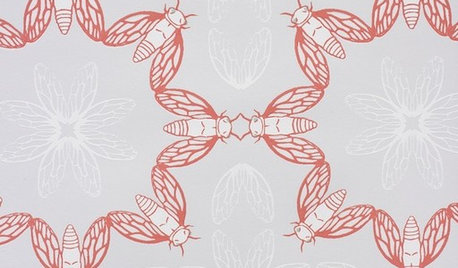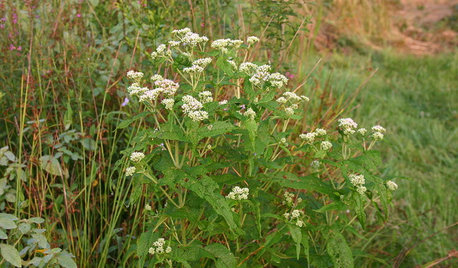Year of the bug
jcatblum
12 years ago
Related Stories

EVENTSPreview Some Captivating Art in This Year’s London Design Festival
The Victoria and Albert Museum’s LDF exhibits are about reflection, wearable art, tiny insects and lots of Swarovski crystals
Full Story
GARDENING AND LANDSCAPINGScreen the Porch for More Living Room (Almost) All Year
Make the Most of Three Seasons With a Personal, Bug-Free Outdoor Oasis
Full Story
GARDENING AND LANDSCAPINGBid Bad Garden Bugs Goodbye and Usher In the Good
Give ants their marching orders and send mosquitoes moseying, while creating a garden that draws pollinators and helpful eaters
Full Story
GARDENING AND LANDSCAPINGPorch Life: Banish the Bugs
Don't let insects be the bane of your sweet tea and swing time. These screening and product ideas will help keep bugs at bay on the porch
Full Story
GARDENING AND LANDSCAPINGBreezy and Bug-Free Modern Porches
Screening keeps pests out of these diverse porches across the U.S., while thoughtful designs keep them visually appealing
Full Story
EARTH DAYHow to Help Your Town’s Beneficial Birds and Bugs
Make a habitat using local materials to provide a home to the creatures that help our gardens
Full Story
DIY PROJECTS12 Signs You've Caught the DIY Bug
Been making inventive things from scratch? Repurposing salvaged pieces creatively? It may be more serious than you think
Full Story
PRODUCT PICKSGuest Picks: Decor to Make Your Eyes Bug Out
Insects are marching to a different tune these days, showing up on knobs, teapots and even tablecloths
Full Story
EVENTSEnjoy Plantings, Eat Bugs and Learn at the Australian Garden Show
Indulge your senses at this four-day celebration of gardening, food and more in Sydney — and don't forget to try the crickets
Full Story
GARDENING GUIDESGreat Design Plant: Common Boneset Helps Good Bugs Thrive
Support bees, moths and butterflies with the nectar of this low-maintenance, versatile and tactile prairie-style plant
Full Story





Okiedawn OK Zone 7
jcatblumOriginal Author
Related Professionals
Ashburn Landscape Architects & Landscape Designers · Wheeling Landscape Architects & Landscape Designers · Buford Landscape Contractors · Braintree Landscape Contractors · Brockton Landscape Contractors · Fort Atkinson Landscape Contractors · Hilo Landscape Contractors · Mount Sinai Landscape Contractors · Shirley Landscape Contractors · Sun City Center Landscape Contractors · Weymouth Landscape Contractors · Four Corners Landscape Contractors · Diamond Bar Decks, Patios & Outdoor Enclosures · Hialeah Decks, Patios & Outdoor Enclosures · New Albany Decks, Patios & Outdoor Enclosuresmksmth zone 7a Tulsa Oklahoma
Okiedawn OK Zone 7
chickencoupe
jcatblumOriginal Author
Okiedawn OK Zone 7
jcatblumOriginal Author
Okiedawn OK Zone 7
jcatblumOriginal Author
grn_grl
chickencoupe
chickencoupe
Okiedawn OK Zone 7
biradarcm
Tractorlady63
biradarcm
Okiedawn OK Zone 7
jcatblumOriginal Author
Okiedawn OK Zone 7
biradarcm
miraje
Okiedawn OK Zone 7
susanlynne48
Okiedawn OK Zone 7